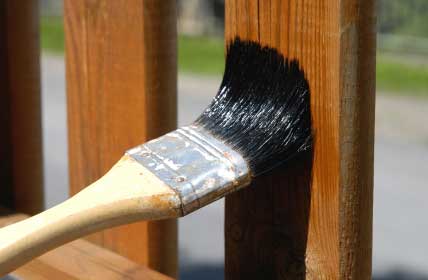Common Types Of Wood Finishing

Wood finishing is a process often used to improve the appearance and texture of the wood item. Without wood finishing, woodworking projects and items would look lifeless and dry. It is highly recommended that wood finishes are applied to wood items as not only will the finishing improve the overall appearance, it also protects and preserves the wood. The following are some wood finishes that are commonly used.
Shellac Shellac is an organic resin produced by female lac bugs that reside in Indian and Malaysian trees. For many centuries, shellacs have been widely used across the world to make wood items better and more durable. Unlike other wood finishes, shellac is non-toxic and does not produce unpleasant fumes (dissolved shellac will still smell bad if not used within a short period) but is vulnerable to alcohol. Damage to the finish can be easily repaired however, by simply re-applying shellac to the problem area. Some wood finishers swear that nothing brings out the beauty of wood as well as shellac.
Polyurethane Polyurethane is a varnish finishing that is ideal for high traffic wood projects, such as desktops, tables and floors, as the finish is very hard. It is available in different finishes, such as glossy and flat, and protects the wood from water damage as well as excessive tear and wear. This wood finish is not ideal for outdoor functions since it has the tendency to crack and turn yellow when exposed to extreme sunlight. It also takes many hours to days for a polyurethane coat to dry.
Tung oil Tung oil is an oil varnish that is made from Tung tree seeds. Although Tung varnish oil is more vulnerable to chipping, a lot of people use it as it resists water well and provides a more natural finished look than the ones coated by polyurethane. Aside from its varnish form, Tung oil is also available in polymerized and pure forms. Polymerized Tung oil leaves a glossier finish than pure Tung, while pure Tung provides a matte finish. Tung oil can take a week or two before it's completely dry.
Lacquer Many people prefer to use this wood finish than varnishes like polyurethane, as it can be applied easily and dries more quickly than the other types of wood finishing. Due to lacquer's short drying time, a surface coated with lacquer accumulates less dust than if coated using a finishing that takes longer to dry. A lacquer finishing not only brings out the beauty of the underlying wood, it is also resistant to abrasion and water damage.
Linseed Oil Unlike other wood finishes, linseed oil does not coat but rather penetrates the wood's pores, accentuating the beauty of the wood grain and creating a shiny finish. A linseed oil finish can be easily repaired and protects the wood from denting. The flip side is that it takes days to dry and does not offer much protection when it comes to water or scratching. As such, many craftsmen will apply coats of lacquer or shellac above linseed oil finishes.
JOIN OUR MAILING LIST
